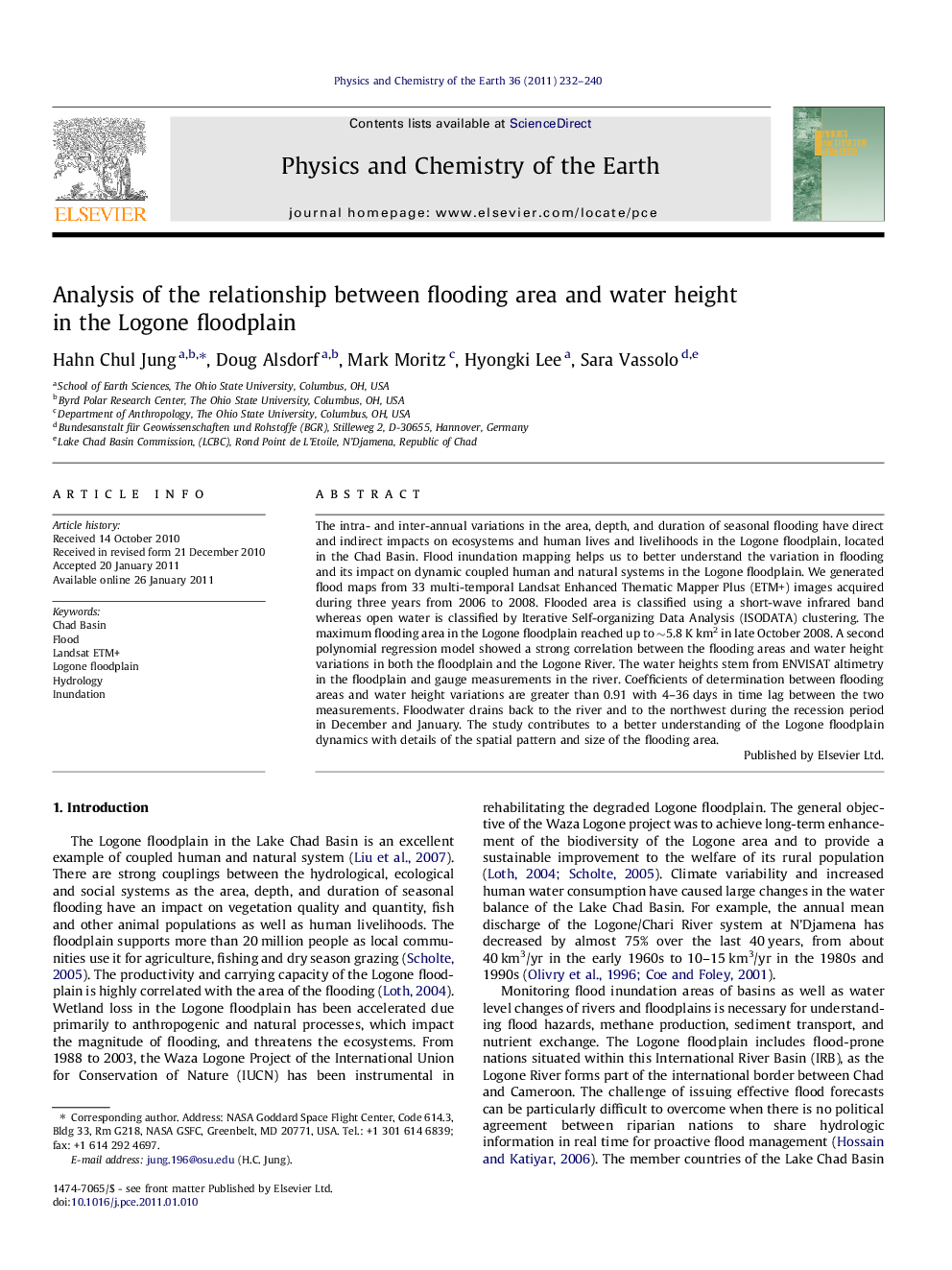| Article ID | Journal | Published Year | Pages | File Type |
|---|---|---|---|---|
| 4721547 | Physics and Chemistry of the Earth, Parts A/B/C | 2011 | 9 Pages |
The intra- and inter-annual variations in the area, depth, and duration of seasonal flooding have direct and indirect impacts on ecosystems and human lives and livelihoods in the Logone floodplain, located in the Chad Basin. Flood inundation mapping helps us to better understand the variation in flooding and its impact on dynamic coupled human and natural systems in the Logone floodplain. We generated flood maps from 33 multi-temporal Landsat Enhanced Thematic Mapper Plus (ETM+) images acquired during three years from 2006 to 2008. Flooded area is classified using a short-wave infrared band whereas open water is classified by Iterative Self-organizing Data Analysis (ISODATA) clustering. The maximum flooding area in the Logone floodplain reached up to ∼5.8 K km2 in late October 2008. A second polynomial regression model showed a strong correlation between the flooding areas and water height variations in both the floodplain and the Logone River. The water heights stem from ENVISAT altimetry in the floodplain and gauge measurements in the river. Coefficients of determination between flooding areas and water height variations are greater than 0.91 with 4–36 days in time lag between the two measurements. Floodwater drains back to the river and to the northwest during the recession period in December and January. The study contributes to a better understanding of the Logone floodplain dynamics with details of the spatial pattern and size of the flooding area.
